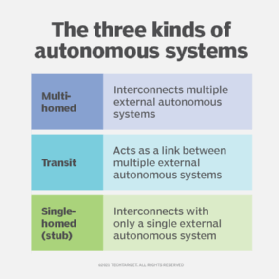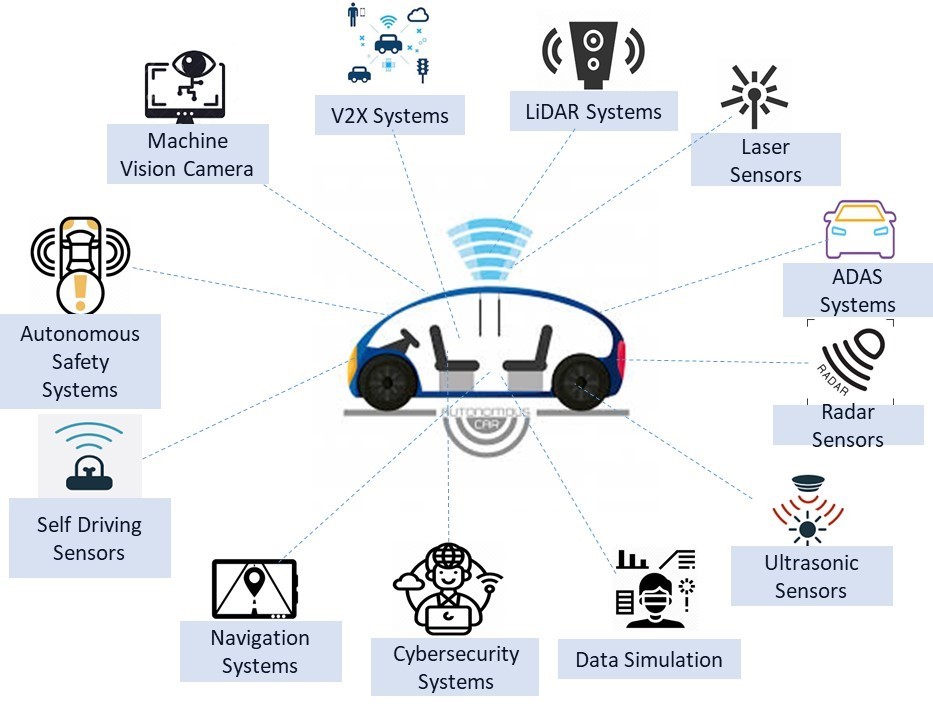Autonomous systems operate independently, making decisions without human intervention. They rely on artificial intelligence and advanced algorithms.
Autonomous systems are transforming various industries by enhancing efficiency and reducing human error. These systems include self-driving cars, drones, and industrial robots. They use sensors, machine learning, and real-time data processing to function effectively. As technology evolves, autonomous systems become more sophisticated and reliable.
Businesses across sectors are adopting these systems to streamline operations and improve productivity. The growing interest in autonomous technology highlights its potential to revolutionize everyday life. By minimizing human involvement, autonomous systems promise safer, faster, and more precise outcomes. The future of automation looks promising, driven by continuous advancements in AI and robotics.
The Dawn Of Autonomous Systems
The dawn of autonomous systems marks a new era in technology. These systems can perform tasks without human intervention. This revolution is changing industries and daily life.
Early Concepts And Inspirations
Early concepts of autonomous systems date back to ancient myths. Stories of mechanical beings and self-operating machines were common. These tales inspired inventors and scientists.
In the 20th century, science fiction played a big role. Books and movies imagined robots and intelligent machines. These ideas pushed real-world innovations.
Researchers started exploring autonomy in the 1940s. They focused on creating machines that could learn and adapt. These early efforts laid the groundwork for modern autonomous systems.
Key Milestones In Development
Several key milestones have shaped the development of autonomous systems. These advancements have brought us closer to a future with intelligent machines.
| Year | Milestone |
|---|---|
| 1943 | The first neural network was created. |
| 1956 | The term “Artificial Intelligence” was coined. |
| 1966 | Shakey the robot was developed. |
| 1997 | IBM’s Deep Blue defeated chess champion Garry Kasparov. |
| 2005 | The first DARPA Grand Challenge was held. |
| 2012 | Google introduced its self-driving car project. |
These milestones show the rapid progress in autonomous systems. They highlight the importance of research and innovation.
Today, autonomous systems are in various fields. They are used in transportation, healthcare, and manufacturing.
We can expect even more advancements in the future. Autonomous systems will continue to transform our world.
Defining Autonomy In Technology
Autonomous systems are changing the way we interact with technology. They can perform tasks without human intervention. These systems make decisions based on data and algorithms.
Characteristics Of Autonomous Systems
Autonomous systems have some key characteristics. Understanding these traits helps us grasp their potential.
- Self-Learning: They learn from their environment.
- Adaptability: They adapt to new situations.
- Decision-Making: They make decisions based on data.
- Self-Maintenance: They maintain themselves without human help.
Levels Of Autonomy
Not all autonomous systems are the same. There are different levels of autonomy.
| Level | Description |
|---|---|
| Level 0 | No automation. Human control is needed. |
| Level 1 | Assistance systems help humans. Partial control. |
| Level 2 | Systems handle some tasks. Human oversight needed. |
| Level 3 | Conditional automation. Systems can make decisions. |
| Level 4 | High automation. Human intervention is rare. |
| Level 5 | Full automation. No human intervention needed. |
Current Landscape And Applications
The world of autonomous systems is evolving quickly. These systems are everywhere. They improve efficiency and safety. They also reduce human error. Let’s explore some exciting applications.
Self-driving Vehicles
Self-driving vehicles are a major innovation. These cars navigate without human input. They use cameras, sensors, and AI. This technology is already on the roads.
- Safety: Self-driving cars aim to reduce accidents.
- Efficiency: They can optimize routes and save fuel.
- Convenience: Passengers can relax and enjoy the ride.
Companies like Tesla and Waymo lead this space. They test and improve these cars every day.
Robotic Process Automation
Robotic Process Automation (RPA) transforms businesses. It automates repetitive tasks. This saves time and reduces errors.
| Industry | Application |
|---|---|
| Banking | Processing transactions |
| Healthcare | Managing patient records |
| Retail | Inventory management |
RPA tools like UiPath and Blue Prism are popular. They help companies achieve their goals faster.

Credit: www.techtarget.com
Impact On Industries
Autonomous systems are changing industries worldwide. They bring innovation and efficiency. Various sectors benefit from these advanced technologies.
Manufacturing And Production
In manufacturing, autonomous systems increase efficiency. Robots perform repetitive tasks without errors. Automated machines assemble products faster. Factories use smart sensors to monitor production.
Here are some key benefits:
- Reduced production costs
- Increased productivity
- Enhanced quality control
- Less human intervention
Smart factories use AI to optimize workflows. This leads to fewer delays. Autonomous vehicles transport materials within factories. This ensures smooth operation.
Healthcare And Medicine
In healthcare, autonomous systems save lives. Robotic surgeries are more precise. AI helps in diagnosing diseases early.
Consider these advantages:
- Improved patient care
- Reduced human errors
- Faster diagnostic processes
- Efficient medical records management
Medical robots assist in surgeries. They reduce recovery time. AI analyzes patient data quickly. This helps doctors make better decisions.
Autonomous systems are revolutionizing industries. They bring efficiency and innovation.
Societal Implications
Autonomous systems are changing society in many ways. These systems impact jobs, ethics, and laws. Understanding these changes helps us prepare for the future.
Job Market Evolution
Autonomous systems affect the job market. Some jobs disappear, while new ones emerge. Machines perform tasks once done by humans. This can lead to job loss in certain sectors.
Workers need new skills to stay employed. Training programs help workers adapt. New job roles focus on overseeing and maintaining these systems. Jobs in data analysis and machine learning are growing.
| Sector | Impact |
|---|---|
| Manufacturing | Increased automation, fewer manual jobs |
| Healthcare | More jobs in tech support and AI integration |
| Transport | Shift to monitoring and controlling autonomous vehicles |
Ethical And Legal Considerations
Autonomous systems bring ethical concerns. Decision-making by machines raises questions. Can we trust machines to make fair choices? Bias in algorithms can lead to unfair outcomes.
Laws must adapt to these new technologies. Current laws may not cover autonomous systems. New regulations are needed for safety and fairness. Policymakers work to create rules for these technologies.
- Data privacy concerns
- Accountability for machine decisions
- Bias in AI algorithms
Ethical guidelines help address these issues. Companies must follow these guidelines. Transparency in how systems work is crucial. This builds trust and ensures fairness.

Credit: www.linkedin.com
Challenges And Limitations
Autonomous systems promise a future of efficiency and innovation. But they face significant challenges and limitations. Understanding these obstacles helps us navigate the path forward.
Technical Hurdles
Building autonomous systems involves overcoming many technical hurdles. These systems need vast computing power. They also require advanced algorithms. Data processing is another big task. Handling real-time data is critical. The sensors must be accurate and reliable.
Integration is another challenge. Different components must work together seamlessly. Ensuring this integration requires rigorous testing. Debugging is a continuous process. Each update must be tested thoroughly.
Safety And Security Concerns
Safety and security are top priorities for autonomous systems. These systems operate without human intervention. Any error can lead to severe consequences. Ensuring safety involves rigorous testing. Real-world scenarios must be simulated accurately. The systems must respond correctly every time.
Security is another critical aspect. Autonomous systems are vulnerable to cyber-attacks. Hackers can exploit system weaknesses. Protecting these systems requires robust security protocols. Encryption and firewalls are essential. Regular updates help keep the systems secure.
| Challenge | Description |
|---|---|
| Computing Power | Requires extensive computational resources. |
| Data Processing | Handles large amounts of real-time data. |
| Integration | Ensures seamless operation of all components. |
| Safety | Prevents errors and ensures correct responses. |
| Security | Protects from cyber-attacks and exploits. |
Addressing these challenges is crucial for the future of autonomous systems. Continuous research and development are essential. Collaboration among experts can drive progress in this field.
The Role Of Ai And Machine Learning
Autonomous systems are transforming various industries. AI and Machine Learning play a central role in these systems. They empower machines to make intelligent decisions without human intervention. This technology is changing the world we live in.
Enabling Intelligent Decision-making
AI algorithms process vast amounts of data. They identify patterns and trends. This helps machines make smart decisions. For example, self-driving cars use AI to navigate and avoid obstacles.
AI models can predict future events. They use historical data for this. Businesses use these predictions to plan better. This improves their efficiency and reduces costs.
| Industry | Application |
|---|---|
| Healthcare | Diagnosing diseases |
| Finance | Fraud detection |
| Retail | Customer behavior analysis |
Continuous Learning And Adaptation
Machine Learning enables systems to learn from experience. These systems improve over time. They adapt to new data and conditions. This is known as continuous learning.
For example, a robot in a factory can learn new tasks. It observes and adjusts its actions. This makes the robot more efficient and versatile.
- Improved performance
- Increased accuracy
- Greater flexibility
Adaptive systems are crucial in dynamic environments. They react to changes swiftly. This ability is vital in fields like cybersecurity and autonomous vehicles.
Envisioning The Future With Autonomous Systems
Autonomous systems are changing the world. They work without human intervention. These systems use advanced technologies. They are designed to make life easier. From self-driving cars to smart homes, the possibilities are endless.
Predictions And Possibilities
The future holds many exciting developments. Experts predict that autonomous systems will become part of everyday life. Below are some key predictions:
- Self-Driving Cars: They will reduce accidents and traffic jams.
- Smart Cities: These will use autonomous systems for better resource management.
- Healthcare: Autonomous robots will assist in surgeries and patient care.
- Agriculture: Drones and robots will improve farming efficiency.
These innovations will transform industries. They will create safer and more efficient environments.
Preparing For A Paradigm Shift
Adopting autonomous systems requires preparation. Individuals and businesses must adapt. Here are steps to prepare:
- Education: Learn about new technologies and their benefits.
- Infrastructure: Upgrade systems to support autonomous technologies.
- Policy: Governments should create regulations for safe adoption.
- Investment: Invest in research and development of autonomous systems.
Preparing now will ensure a smooth transition. Embracing change will lead to a brighter future.

Credit: blogs.mathworks.com
Frequently Asked Questions
What Are Autonomous Systems?
Autonomous systems are self-governing networks or devices capable of making decisions without human intervention, often using AI and machine learning.
How Do Autonomous Systems Work?
Autonomous systems use sensors, algorithms, and data to analyze their environment and make decisions. They operate independently.
What Are Examples Of Autonomous Systems?
Examples include self-driving cars, drones, and robotic vacuum cleaners. These systems perform tasks without human input.
Why Are Autonomous Systems Important?
They increase efficiency, reduce human error, and can operate in dangerous or inaccessible environments, improving safety and productivity.
Conclusion
The future of autonomous systems is promising. They are transforming industries, improving efficiency, and enhancing safety. Embracing these technologies can lead to significant advancements. Stay informed and adapt to these changes. Autonomous systems are not just a trend; they are the future.
Keep exploring their potential and stay ahead in the tech world.
